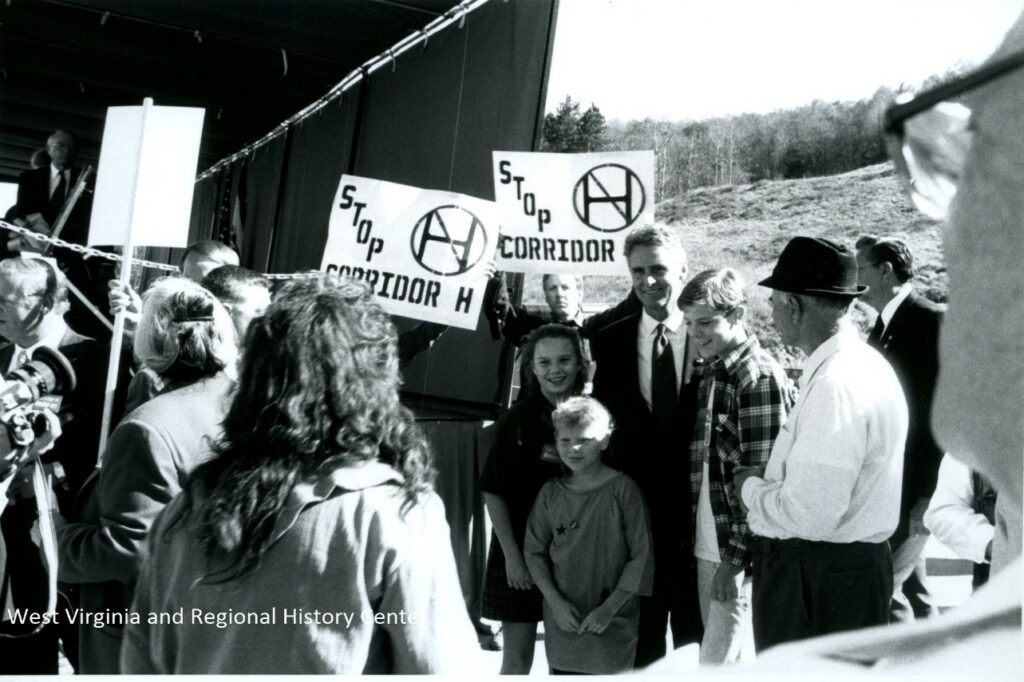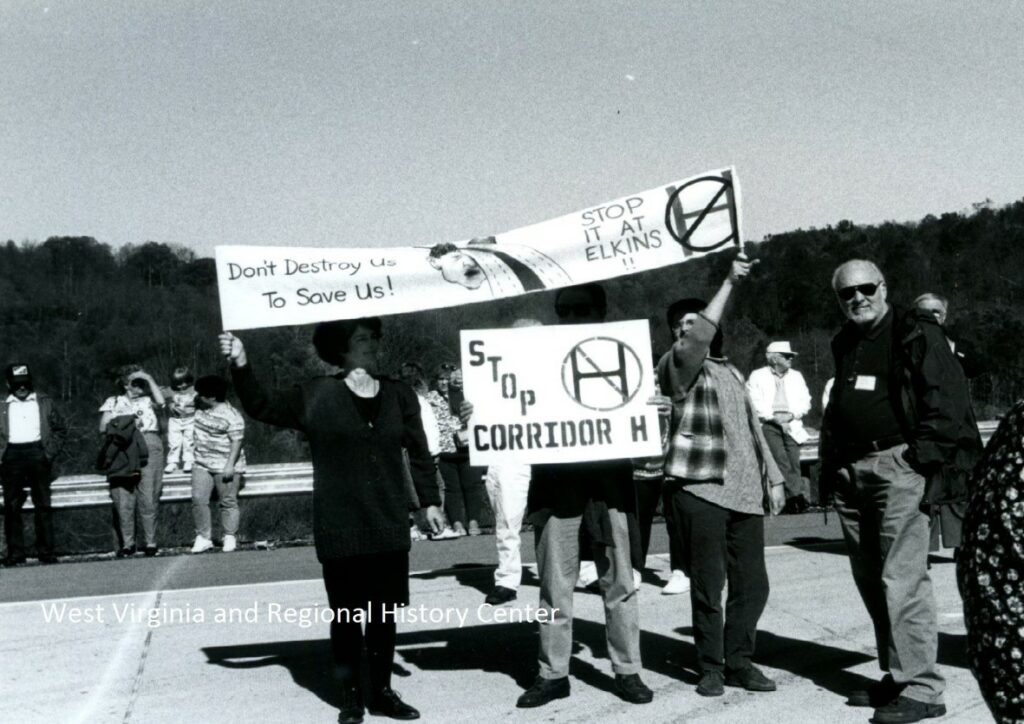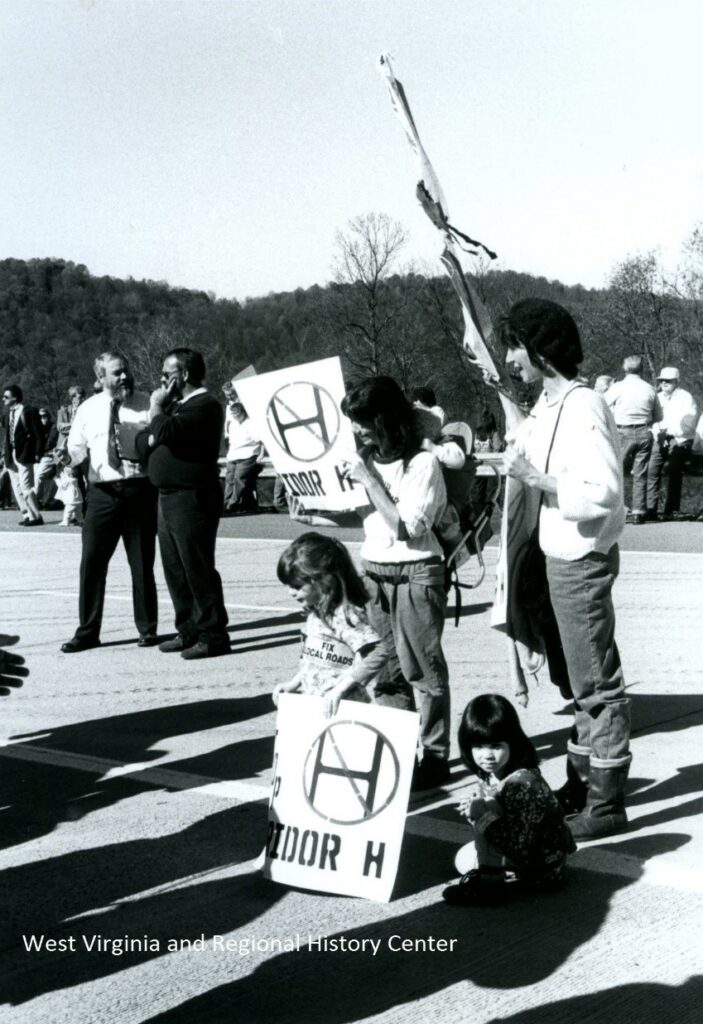Corridor H
Posted by Jane Metters LaBarbara.October 26th, 2020
Blog post by Katie Lehosit, WVRHC Graduate Assistant.
October 2020 marks the 26th anniversary of a section of highway being opened near Elkins, West Virginia. This highway, which spanned 16 miles and 4 lanes, was the highly debated Corridor H. Opening day, which was on October 29th, 1994, drew such guests as Governor Gaston Caperton and Senator Robert C. Byrd. The day also brought anti-Corridor H groups to Elkins, which included the Corridor H Alternative Alliance and North for Corridor H Alliance.

The Corridor H project was part of Appalachian Regional Development Act’s (ARDA) Appalachian Development Highway System (ADHS). This plan, originally formed by President John F. Kennedy, was signed into action by President Lydon B. Johnson in 1965. The ARDA’s main goal was to connect Appalachia with the rest of the United States by economic, educational, and physical means. To physically connect the region with the U.S., the ADHS planned for corridors to be built in 13 states. Six of these corridors were planned for West Virginia. While many of these corridor projects went by relatively smoothly in the state, Corridor H was a different story, estimating to cost $10 million per mile.

Originally set aside due to financial reasons in the 1970s and 80s, Senator Jay Rockefeller began to push for construction to begin on Corridor H in the 90s. Environmental, historical, and activist groups were quick to band together. Groups like North for Corridor H Alliance (NCHA) fought against the original proposed route, which would have cut through wetlands, Corrick’s Ford Battlefield, Canaan Valley, and other natural wonders of the Mountain State. While Rockefeller argued the construction would create jobs, make travel to Washington D.C. faster, and bring tourism to West Virginia, NCHA argued the opposite. While the groups against Corridor H did agree the highway would create faster travel time to the nation’s capital, they also argued the highway would do more harm than good.
Aside from destroying popular tourist areas in the state, like Canaan Valley, NCHA and other groups also brought up other forms of harm the highway would bring. These included harm to West Virginia’s wetlands, endangered species like the Northern Flying Squirrel, streams, forests like the Monongahela forest, small town economies, and historical sites like Corrick’s Ford. While a northern route was chosen in 1993, the decision was not a happy one for anti-Corridor H groups. The proposed northern route still cut through wetland and other important areas, which lead NCHA and similar groups to file a federal suit against the West Virginia Department of Transportation and the Federal Highways Administration in 1996.

Through various legal battles, the construction of Corridor H has been slowed. In fact, as of December 2019, 16.8 miles of the route do not have a final design. While the future of Corridor H is still in question, we can look back at October 29, 1994 and see how activism has changed the course of West Virginia history. Regardless of if you are pro-Corridor H, anti-Corridor H, or somewhere in between, it is impressive to see how grassroots activists changed the planning of the now 55 year old project.





